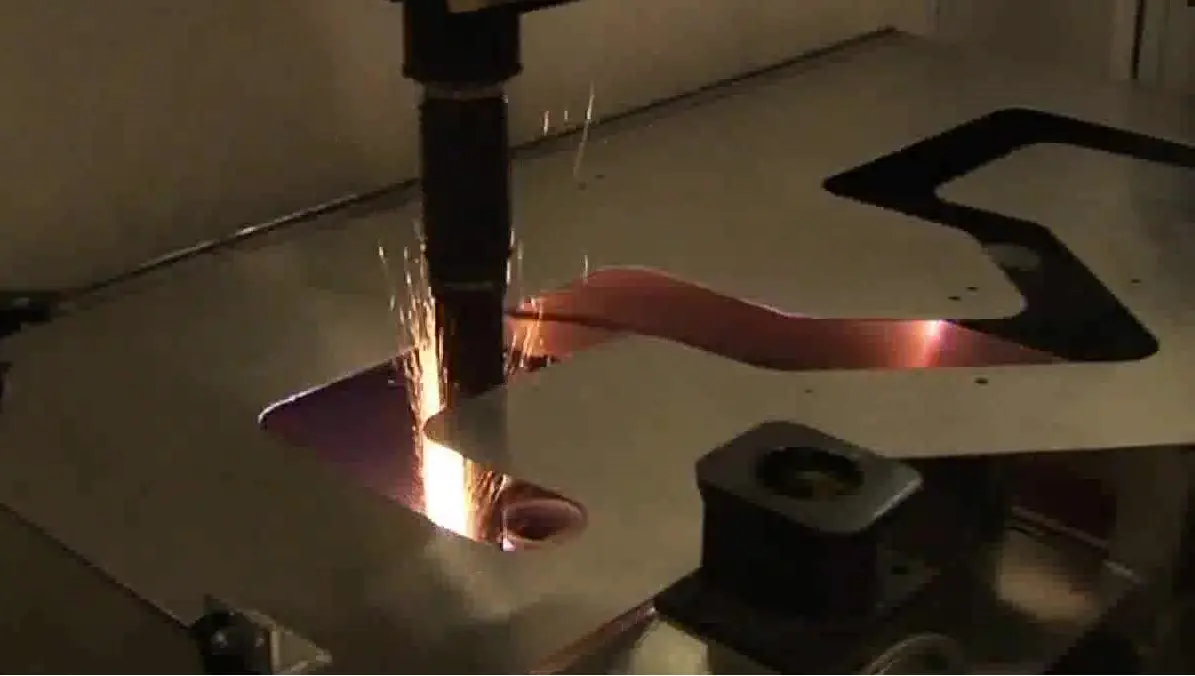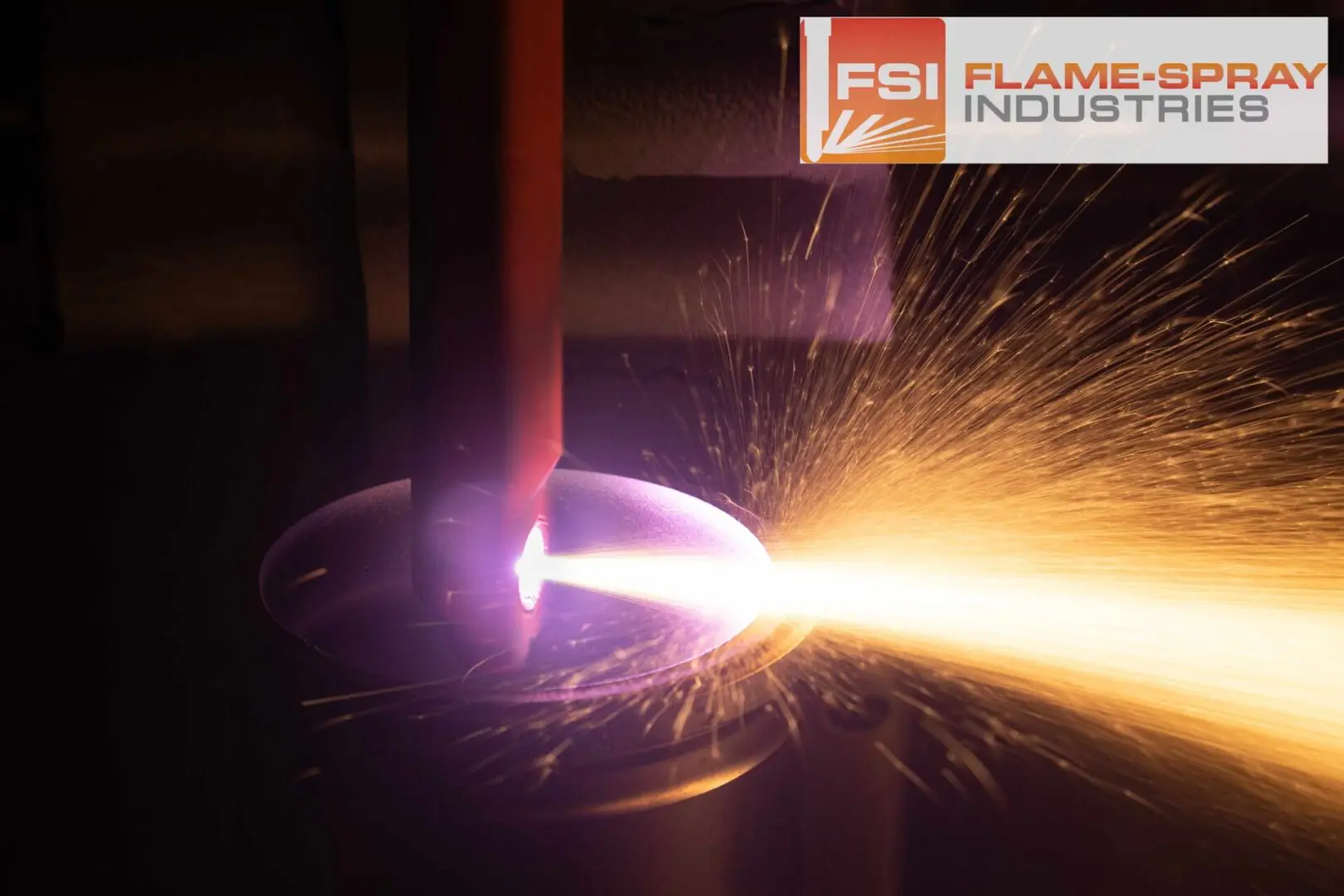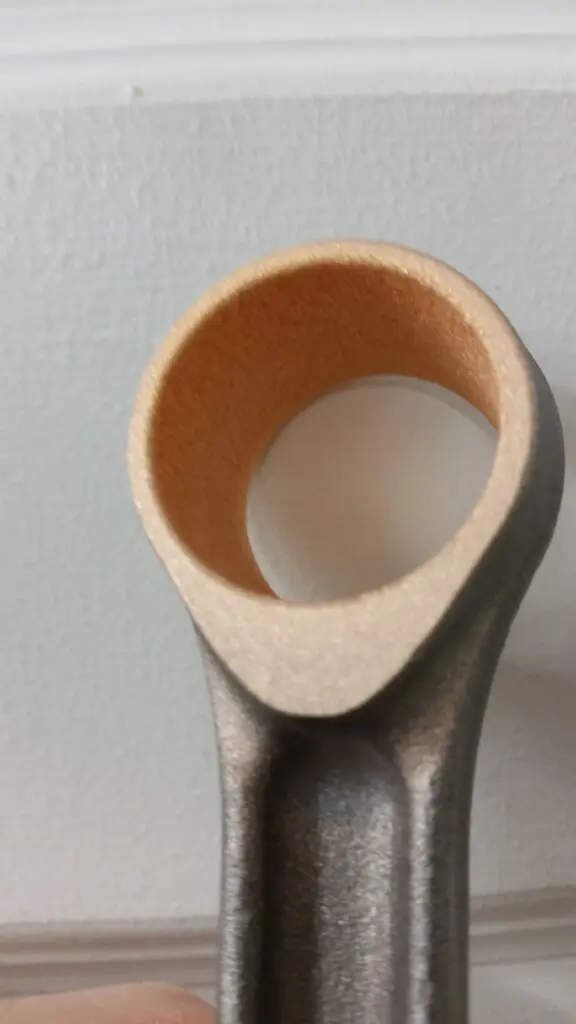PTWA Thermal Spray Applications
How the System Works
The PTWA (Plasma Transferred Wire Arc) thermal spray process utilizes a single wire as the feedstock material. All conductive wires with diameter up to and including 0.0625″ (1.6mm) can be used as the feedstock material, including “cored” wires. The wire is melted, atomized, and propelled to the substrate by a supersonic plasma jet formed by an arc between the cathode and the tip of the wire.
After initial atomization, a large flow of high pressure gas through the nozzle transports the molten droplets onto the substrate such as a bore wall. The high kinetic energy causes the particles to flatten as they impinge on the surface of the substrate; the heat transfer between the flattened particles and the substrate causes a rapid solidification. Thus, the coating comprises these solidified droplets stacked one on top of another along the surface.


Application for New Product Aluminum Engines
An important goal for engine manufacturers is to reduce fuel consumption, which can be accomplished by decreasing the overall vehicle weight and improving engine efficiency by reducing internal friction losses. Substantial weight savings can be achieved through the use of aluminum engines. However, most aluminum engines require cast iron liners to be used as the wear surface.
Additional weight savings and potential friction reduction can be achieved by replacing these heavy cast iron liners with low friction, wear-resistant PTWA coatings on the internal surface of the engine cylinder bores.
Additional benefits of PTWA in new production engines include improved heat transfer and decreased bore distortion.
Application for Remanufacturing of Worn Engines
PTWA can be used to repair worn cylinder bores in both aluminum and cast-iron engine blocks. This technology makes it possible to salvage engine blocks that would otherwise be scrapped. In addition, PTWA thermal spray can reduce remanufacturing costs for engines currently remanufactured with expensive oversized pistons.


Additional Applications
PTWA can be used to apply a coating to the wear surface of parts to replace a bushing or a bearing. For example, using PTWA to coat the bearing surface of a connecting rod offers many benefits, including reductions in weight, cost, friction potential, and stress in the connecting rod. PTWA can deposit a coating on an internal or external surface of a cylinder. Internal diameters as small as 2″ (50mm) or as large as 14″ (360 mm) can be coated with the PTWA technology.
PTWA Benefits
PTWA was developed to replace cast iron liners in aluminum engines and can deliver many benefits for aluminum engines including:

Weight savings: 1.5 kg/block for I4 engines, 3kg/block for V8 engines
Packaging: Allows for closer spacing as compared to liners
Improved heat transfer and fatigue life: OEM published data states “temperature of the entire bore can be reduced by 20-50º C”
Reduced friction: Published data from OEMs shows friction improvements
Improved bore wear: Component testing and running engine testing data shows improved bore wear
Potential for a lower cost compared to liners
